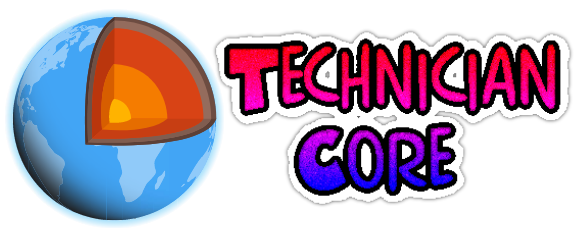The Channel Assignments
In 1963, the frequency band 2500-2686 MHz was reserved to academic establishments for over-the-air transmission of educational TV packages. Transmission was point-to-point, for instance, campus-to-campus or campus-to-hospital for persevering with schooling wants. Therefore the identify: Tutorial Tv, Mounted Service (ITFS). The ability approved (as much as 100 watts) allowed transmit/obtain separations of as much as 30-40 miles.
In 1972, business operators have been permitted to make use of the coexisting business band 2150-2162 MHz for over-the-air pay-TV transmissions to rooftop antennas on house buildings and personal properties and for enterprise information transmissions. Transmitters have been just like these for ITFS service, and the vary of those installations was additionally 30-40 miles. The transmitter web site was centered within the protection space, normally a metropolis, on a preexisting tower or atop a tall constructing.
The antennas have been normally omnidirectional to achieve all subscribers within the round protection space. The sign was meant for distinct subscriber areas moderately than for anybody who needed to select up the alerts (as within the broadcast providers). Due to this fact the brand new service was named Multipoint Distribution Service (MDS). This service was the start of what we now know as “Wi-fi Cable”. MDS was conceived as an alternate or complement to standard cable tv (CATV). It was extra profitable in areas not coated by CATV. In areas the place each providers have been accessible, it was severely challenged: it might provide just one or two TV channels versus the handfuls of channels provided by CATV. Therefore, after the novelty of MDS wore off, MDS revenues declined. Clearly, one treatment was to make use of extra channels, and the business wi-fi operators eyed with curiosity the calmly used ITFS channels reserved for academic functions.
MDS operators and potential MDS operators filed a Petition for Rulemaking to allow business use of a few of the ITFS channels. In consequence, in 1983 the FCC reallocated eight of the ITFS channels (recognized as Teams E and F) to be used by business over-the-air pay-TV operations. The thought was for every market to have two licensees, every of whom would have 4 channels. Since this allowed simultaneous broadcast of many extra channels than present MDS, the newly allotted channels grew to become Multichannel Multipoint Distribution Service (MMDS). Many MDS operators have acquired MMDS channel licenses and, in some circumstances, newly licensed MMDS operators have acquired older MDS operations. Present ITFS licensees utilizing the E and F channels weren’t displaced at the moment, though the foundations allow the MMDS licensee to pay all prices and relocate such a licensee to an alternate channel if one is obtainable.
Nearly concurrently, the FCC allotted three ITFS channels (in Group H) to the comparatively new Operational Mounted Service (OFS). This was envisioned as a point-to-point transmit/obtain service primarily for the switch of enterprise data. Nonetheless, directly MDS and MMDS licensees in giant numbers started to amass licenses for the OFS channels of their markets and use them for one-way analog video programming. Since 1998, the FCC has thought of these H channels (H1, H2 and H3) MDS channels.
For functions of describing operations, we should always think about the MDS, ITFS and MMDS providers technically equivalent. For these within the FCC’s channel project plan, it’s spelled out in Appendix A of LBA Technical Be aware 115.
The Cable Tv-Sort Operation
Traditionally, wi-fi cable has been a one-way analog video service. “One-way analog video service” implies that it has operated very like business broadcast stations, sending one “video stream” corresponding to NBC or CNN over every channel. Viewers used downconverters to step down the transmissions from 2500 MHz frequencies to 65 MHz, after which they may watch the packages on conventional tv units.
The MDS operator who had a license for one channel was restricted to providing one channel of programming. The MMDS operator who had a license for 4 channels was solely barely higher off, as a result of 4 channels have been accessible to cable prospects. By aggregating all of the MDS and MMDS channels in a market, the consortium of licensees might function a wi-fi cable system with as many as 13 channels. Though this may increasingly have been viable within the early Nineteen Eighties, by the Nineties the market demanded dozens of channels from a cable service. MMDS operators nonetheless desired use of the ITFS channels to satisfy this want.
ITFS operators tended to make use of their channels for long-distance schooling throughout common working hours, and the channels lay fallow on nights and weekends when the wi-fi cable demand for programming was the best. The FCC had positioned a provision in its guidelines that permitted an ITFS licensee to lease its “extra channel capability”. This meant that so long as the ITFS licensee used its channels for academic functions for no less than 20 hours per week per channel, it was free to lease the channel for business makes use of the remainder of the time. The FCC guidelines comprise restrictions on the Airtime Lease Agreements to stop a naive educator-licensee from making a gift of too a lot of its rights, however the usage of these agreements permitted an explosion in progress in ITFS operations.
The up-front price to the educator to assemble a four-channel transmission system and set up obtain gear within the faculties to be served might run into six figures. Most college programs didn’t have this type of cash accessible for an untried know-how. So, underneath the leasing guidelines, it labored like this: the business wi-fi cable operator available in the market paid all of the up-front software prices for authorized and engineering work to arrange an software to the FCC for a license to be held by the college. The wi-fi cable operator bought the gear, constructed the transmitter tower, put in the obtain websites on the faculties and constructed a studio. The operator labored with a number of educators in its market, so that almost all accessible channels have been used, and all shared the transmission facility. Every educator was a licensee in its personal proper however had a contractual settlement to lease its extra channel capability again to the wi-fi cable operator. The educator acquired the license with out having to spend cash, had the usage of the studio and gear constructed by the wi-fi cable operator and had use of the service for a lot of hours every week. As well as, it obtained month-to-month lease funds from the wi-fi cable operator to be used of the channels on nights and weekends. This association is a basic instance of enterprise and academic entities cooperating to the great of each. This new, untried know-how grew to become a moneymaker for the college along with permitting long-distance schooling to turn into a actuality. And, the wi-fi cable operator now had entry to as many as 33 channels via the usage of the ITFS, MMDS and MDS bands. Thirty-one of those channels are instantly adjoining to one another within the 2500 MHz band, and two are at 2100 MHz. The channels designated because the A gaggle, the B group, the C group, the D group and the G group are the reserved academic channels. The channels designated as channel 1, channel 2, the E group, the F group and channels H1, H2 and H3 can be found for business operators.
Industrial Use Of ITFS Channels
In 1991, the FCC determined to allow wi-fi cable operators to make use of ITFS channels for his or her business operations underneath sure moderately strict circumstances. A wi-fi cable operator is outlined as one who holds a conditional license, a license or a lease on a minimum of 4 MDS channels or has an unopposed software pending for a minimum of 4 MDS channels. The wi-fi cable operator could request permission to function on ITFS channels if there are not any further MDS channels accessible available in the market and there are a minimum of eight remaining unused ITFS channels accessible for future ITFS use in the neighborhood. Entities eligible for ITFS licenses could request from the FCC that they be given entry to the commercially used ITFS channels for as much as 40 hours per week per channel. These circumstances are spelled out in 47 CFR §74.990 via §74.992.
BTA Auctions
Within the early Nineties, the U.S. economic system was down and Congress had found the greenback worth of the spectrum licenses the FCC granted. It mandated that licenses in most providers be granted to the very best bidder. This choice vastly modified the wi-fi cable market.
In 1995 the FCC guidelines have been modified to specify that every one remaining MDS licenses could be auctioned. The choice was made to divide the nation into geographic areas, every of which might then be auctioned off. The Rand McNally Fundamental Buying and selling Space (BTA) divisions have been chosen, with the addition of some BTA-like areas to finish protection of the USA and its territories. Every BTA or BTA-like space is a group of counties. The bodily measurement varies vastly though they are usually smaller within the extra densely populated east and on the west coast and so they are usually bigger within the extra sparsely populated areas of the western United States.
What the FCC was granting in its BTA license was the best to make use of any of the 13 business channels (see above for a listing) anyplace in its BTA if it might accomplish that with out inflicting interference to any pre-existing licensee or to any adjoining BTA. These pre-existing licensees are referred to as “grandfathered” licensees and their licenses stay in impact and are eligible for renewal on the finish of their license time period. The grandfathered licenses have a protected service space, which is a 35-mile circle, centered on the transmitter web site in use in 1991 when the protected service space guidelines have been finalized. This space could overlap multiple BTA and requires safety from all close by BTA licensees. The interference protections required for these grandfathered stations is extra beneficiant than that supplied to BTA licensees, as properly. The BTA licensees are shielded from interference on the boundary of the BTA, however the irregular shapes of the BTA boundaries usually are not reflective of real-world propagation circumstances and make service to areas on the fringe of the service space tougher.
The MDS public sale occurred from November 1995 to March 1996 and yielded $216.3 million. The public sale funds weren’t allotted to the FCC; they went immediately into the U.S. Treasury. A complete of 493 licenses, one per BTA, have been awarded to a complete of 67 licensees.
Two-Method Digital Operations
Lately the wi-fi cable technical requirements have been relaxed to allow a one- or two-way digital service. This broadens the potential use of the spectrum. A wi-fi cable operator could use digital compression to put further “video streams” in the identical variety of channels, in impact growing its channel capability with out utilizing extra bandwidth. It could use the response channels for pay-per-view ordering. Or, it could use the two-way service for high-speed wi-fi Web or different information switch purposes.
This alteration within the guidelines was the results of efforts by a consortium of wi-fi cable operators, consultants, attorneys, ITFS licensees and gear producers. This group acquired collectively and created a plan to allow two-way use of the wi-fi cable frequencies. They decided minimal working requirements the gear might tolerate, interference requirements with which operators might reside, an expedited processing methodology and frequency sharing guidelines the educators and wi-fi cable operators each discovered truthful. Then all the bundle was changed into a proposal on the Fee. The FCC granted substantial parts of the bundle with out change. The preliminary submitting window for two-way purposes was in August 2000. Many of those purposes have been granted and are being constructed.
In a two-way digital wi-fi cable system, every subscriber has not solely a receiver but additionally a transmitter. These transmitters have low energy and ship a response again to the response station hub. The response transmission known as the upstream transmission, and the sign from the principle transmitter known as the downstream transmission. Initially the system required a directional response transmit antenna oriented immediately on the response station hub. Nonetheless, that meant solely educated service personnel might do set up. In an effort to scale back operational prices, some wi-fi cable operators petitioned the FCC to allow low-gain omnidirectional response antennas for use so customers might set up the gear themselves. This request was granted.
Booster stations
As well as, the FCC guidelines allowing booster stations have been relaxed, so an operator could extra simply add supplemental transmitter areas to serve areas that have been beforehand out of attain. Boosters is perhaps used on the downstream part of the two-way system, or the transmitter frequency of the one-way system. This allows extra “cellularization” of the market to enhance protection with a number of transmitters.
Line-of-sight operation
Historically, the antennas used for wi-fi cable have required a line-of-sight (LOS) path between transmit and obtain antennas. This limits service suppliers to placing the hub antenna at a really excessive central location, typically 500 ft above the encompassing space. They need to additionally use a excessive transmit energy to achieve the 35-mile restrict of the protection space. As well as, the client’s antennas should typically be mounted on the highest level on the rooftop, which is ugly from the patron’s standpoint and may additionally be in violation of restrictive covenants.
Even with these restrictions, the usable service space is proscribed to parts of the approved service space. Any constructing behind, or “within the shadow of”, a bigger construction can not obtain service. This bigger construction is usually a hill or a constructing or perhaps a water tank. On a nationwide common, LOS service is obtainable solely between 30% and 80% of a certified service space.
As well as, utilizing a really tall high-powered transmitter creates interference issues in adjoining areas. Cooperation between operators in neighboring areas is critical to resolve the interference situation. Usually the identical firm can have operations in adjoining markets, so it’s creating interference issues for itself. Use of a tall, high-powered hub antenna limits the operator’s capacity to re-use the identical frequencies in its market, as properly.
Non-line-of-sight operation
To beat these issues, a number of producers are engaged on know-how to allow non-line-of-sight operation. That is outlined as dependable operation within the absence of a transparent LOS path. Though the sign will not be anticipated to penetrate giant terrain obstructions, it may be anticipated to penetrate partitions and foliage and bend round buildings. The sign must be sturdy sufficient to function in an atmosphere of multipath fading and regardless of some obstruction and interference. The objective is to attain protection of 90% of the approved service space. Non-LOS (NLOS) paths usually are not as environment friendly as LOS paths, however they allow use of shorter, lower-powered transmitters. This permits extra re-use of the frequencies.
The areas which have obstructed paths nonetheless obtain a sign, however it’s a weak sign. The NLOS areas obtain sign that has traveled alongside paths that replicate (bounce off an obstruction) or refract (bend as they go over an obstruction). There are any variety of such paths that begin on the hub web site and finish on the buyer web site. The sign obtained alongside any such path is weak, or attenuated. As well as, the paths have totally different lengths, which suggests the time delay alongside them varies. Clever buyer premises gear can use error-checking routines to mix the alerts from the assorted paths and proper the issues within the information sufficiently to have a usable sign. There are methods to foretell the attenuation and the multi-path results, and these calculations point out the trail loss to be anticipated from a NLOS path. The wi-fi cable operator can embody this loss in its planning, and thereby allow NLOS operation.
Self-Set up of Buyer Premises Gear
One of many bigger bills in a wi-fi cable operation is offering and putting in gear on the client premises. So long as the requirement exists to “fine-tune” every set up to optimize the LOS, educated installers should be dispatched for every new subscriber. As wi-fi cable programs are designed to allow larger loss budgets, prospects can set up gear themselves. The objective is to have universally suitable gear that’s accessible at client electronics shops, which shoppers should purchase and set up themselves. The DirecTV mannequin is the one desired by the wi-fi cable trade. Customers purchase the DirecTV gear themselves and most set up it themselves. Skilled set up is obtainable for a payment if the client needs. If this could possibly be completed within the wi-fi cable service, an operator’s prices could be vastly diminished.
Glossary
Airtime Lease Settlement. The settlement between the educator and the business wi-fi cable operator to allow the wi-fi cable operator to make use of the educator’s frequencies throughout sure occasions of the week. These agreements are mentioned in 47 CFR §74.931.
Booster Station. A further transmitter utilized by the wi-fi cable operator to repeat the alerts of the MDS station or originate MDS alerts. Booster stations are meant to enhance service in areas which might be poorly served by the principle transmitter.
BTA. Fundamental Buying and selling Space. A Rand-McNally designation for a geographical unit made up of a number of counties, which Rand McNally has decided have some traits in widespread.
BTA License. A license issued to a wi-fi cable business operator. The BTA licenses have been auctioned in 1995 and 1996. A BTA license authorizes an operator to make use of the entire commercially accessible channels inside a BTA so long as no interference is created to any approved station present on the time of the public sale.
Cable Tv (CATV). A subscription providing of a number of tv channels accessible from a single entity, however CATV normally signifies conventional wired cable.
Buyer Premises Gear (CPE). The system of antenna, transmission line and downconverter or modem put in on the buyer’s web site to allow use of wi-fi cable broadband know-how.
Extra Channel Capability. Any time throughout the week that the ITFS licensee’s channels usually are not wanted for academic actions. The spectrum used to lie fallow throughout these hours; now FCC guidelines allow leasing the usage of the channels throughout this time to business operators, creating income for the colleges and growing spectrum effectivity. See Airtime Lease Settlement.
Federal Communications Fee (FCC). The federal company mandated by congress to manage use of the radio spectrum.
Tutorial Tv Mounted Service (ITFS). The frequencies put aside to be used of academic entities in the midst of their academic mission. The channels are six MHz huge every. The reserved channels vary from 2500 MHz to 2686 MHz. The service is “mounted” in that the transmitter and obtain websites are recognized to the FCC and specified within the license. The aim of this service is to allow long-distance studying. For instance, a hospital could also be a licensed obtain web site and use the service for persevering with schooling. The FCC guidelines for ITFS stations could also be present in 47 CFR §74, Subpart I (which begins at §74.900).
Line-of-Sight (LOS). A transparent, unobstructed microwave path exists between transmit and obtain antennas. Microwave LOS propagation requires not solely that the direct path between the 2 antennas be unobstructed, however that an space across the path even be clear. This space is sausage-shaped and surrounds the direct path in all three dimensions. It’s bigger in diameter (extends farther from the direct path) within the middle than on the endpoints, and varies in diameter with frequency and with the size of the entire path. It’s referred to as Fresnel zone clearance after the French mathematician who developed the method.
Multipoint Distribution Service (MDS). A home public radio service rendered from a number of mounted transmitting websites to a number of receiving areas. These channels are six MHz huge every. An MDS licensee could function both as a standard provider or as a non-common provider, however should specify such to the FCC. The frequencies initially assigned for this service are within the 2150-2162 MHz band. The frequency bands 2596-2644 MHz and 2650-2680 MHz have been added when the necessity for extra spectrum grew to become obvious. The FCC guidelines for MDS stations could also be present in 47 CFR §21, Subpart Okay (which begins at §21.900).
Multichannel Multipoint Distribution Service (MMDS). An MDS service using a number of transmitting channels. The FCC guidelines for MMDS stations could also be present in 47 CFR §21, Subpart Okay (which begins at §21.900).
Response Station. In a two-way digital wi-fi cable system, the client web site is the response station. It communicates again to the wi-fi cable system, speaking immediately with the response station hub.
Response Station Hub. A set facility operated by the licensee or the wi-fi cable operator, for the reception of knowledge transmitted by a number of response stations. The response station should use digital modulation with uniform energy spectral density.
Wi-fi Cable. Use of microwave frequencies to mixture a number of channels of video programming, that are then provided to subscribers. Using microwave frequencies as an alternative of wires makes it a lot simpler to serve properties in less-dense areas. As well as, the price of wiring is eradicated.




